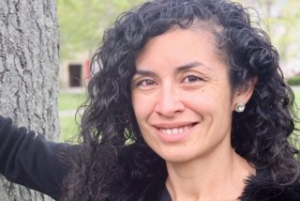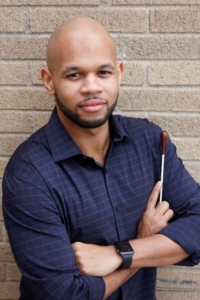As I was reading the “NJ September Ready Arts Education” document from artsednj.org, it re-dawned on me that every teacher in the state has had the difficult task to figure out how to make their music classes meaningful while staying connected. So how do we do that?? Below I have brainstormed a few things that I will be trying this Fall, provided that school is either a hybrid model or entirely online.
I am hoping to not go into the realm of having a thousand one-off musical activities. I will try to design activities that can tie in with literacy, performance, creativity, while at the same time promoting student personal accountability. When students are made responsible for their own learning, real growth can be achieved.
Note: This is by no means meant to apply to everyone in every situation; you may choose to modify or completely change the ideas listed below.
IDEA A: Learning Repertoire in Chunks and Layers.
Have you or someone you know attempted to put together a virtual choir video, only to find that students are breathing where they’re not supposed to, singing the incorrect notes and/or rhythms, and perhaps not singing very musically? Didn’t you ever wish you could address the musicianship of their music making in a meaningful, thorough, yet efficient way? In this approach to learning repertoire online, students are given the chance to take responsibility for their own proficiency and understanding of the music.
Videos below are suggested steps, and can take place over the period of a few weeks. Rinse and repeat for different segments and pieces.
- Video 1 – Sing a short excerpt of the piece with accurate notes and rhythms (neutral syllable, solfege, or count singing, etc.) along with the practice track. (You’ll have to use Noteflight, Sibelius, Finale, MuseScore, OR a piano with metronome to make a practice track for each voice part)
- Video 2 – Sing the same excerpt with accurate notes and rhythms AND correct diction, modeled after teacher instruction video [perhaps supply IPA or a recording of a native speaker speaking text, or a recording of yourself speaking or singing using “singing diction”]
- Video 3 – PERFORM with accurate notes, rhythms, diction, AND phrasing; including word stress, dynamics, and cut offs as indicated on the prepared score and as discussed over Zoom Rehearsal and/or a conducting/modeling video, depending on whether or not you are meeting in person with students.
- Video 4 – After a discussion about the expression and message of the piece that you have chosen, students are now assigned a video in which they prepare their “virtual choir” submission using all of the guidelines that they have worked on in the previous steps.
Sometimes, asking for videos from students can be likened to pulling teeth; if students are hesitant to send in videos, you can accept audios, or complete these singing in small group Zoom meetings. If this is not possible due to technology, students can send in recordings using their phone. Videos optional.
Assessment piece: Pass/Fail; Randomly spot check student work (give feedback when possible). After 3-4 cycles: Have students peer-review their small segments, or ask section leaders or responsible choir members to review the people in their voice part.
These can be done concurrently. For example, sing m1-16 of Mozart, m 10-18 of Guillaume, m. 20-24 of LaBarr. Move on each song as students demonstrate their proficiency.
This approach can also be applied to a solo line of repertoire. Let’s say that in September you aren’t ready to have them learn a 4-part harmony piece just yet. You’d rather focus on getting them to sing accurate notes, rhythms, using good singing diction and demonstrating a sense of line. Have them do the same activity, with more or less steps, using “My Country ’Tis of Thee” or a similar melody which they can pick up easily.
Potential Drawbacks: Can get dry real fast, since they are focusing only on a small segment at a time. If it is a higher achieving ensemble or older kids, you can increase the length of the segment OR build in music theory / sight singing skills into it.
IDEA B: Sight Reading in context of repertoire
It’s easy to assign a daily or weekly Sightreadingfactory.com assignment, but how does that have to do with the music they are performing?
Take selected segments from their music and identify sections where each part could feasibly sight-read, given their starting note. Maybe these are the sections that don’t include significant jumps or difficult rhythms. Maybe choose a piece of music that sight-read-able for the purpose of giving students a chance to succeed on their own.
- Teach part of a song by rote through video or Zoom rehearsal.
- Assignment: have them sing the part they learned using a practice track or video, then make them responsible for learning the next few measures on their own. They can use solfege, or any other method [including plunking on a piano or trying their best to pick it up from youtube] to learn the next segment.
- Record along with the backing track (which will have a metronome, and their part highlighted. Optional: During their Assigned independent study segment, have the highlighted part drop out). This will take knowledge and proficiency in a notation software such as Sibelius, Noteflight*, Finale, or MuseScore* *Available for Free
- Alternatively, assign them 4 measures or less of the song that you have chosen and ask them to figure out how to sing it. In their submission ask them how they learned it—this may be a good chance for you to learn which of your singers has piano skills, sight-reading skills, or use a video to learn it. This of course may depend on the level of your learners.
Idea C: Part of Your Musical World
If you want to take a break from working on repertoire, it may be helpful to take a glance into the musical worlds that students come from. For many students, music exists in two categories – there’s the music from school, and the music that they listen to out side of school. Why not bring the two together?
This lesson can take place asynchronously, or over group discussions. You could even host a “listening party” where the teacher screen-shares the song that students submitted prior to the meeting (Teachers should also pre-screen all videos submitted by the students.)
Depending on the size of the class, this may take several class meetings to get through. Hopefully students will be encouraged to open a discussion with one another based on the songs that they submit for this sharing project.
Ask students to pick a song that is 1) Significant to them 2)school-appropriate. Have them submit a YouTube link through a google form. With the link, they should include: Written portion – 3-4 sentences each:
- What is it that you like about this song?
- What does the message of the song talk about?
- What does this song mean to YOU?
- If someone were listening to this for the first time, what might you tell them to listen for?
The following week, you can return to this song and apply the following extensions:
- Find another artist’s rendition of this song (A cover). What key elements does the other person change? How is the overall effect of the song changed?
- Which rendition do you prefer? Why?
FURTHER EXTENSION:
Create your own cover, either of the song you submitted in the original prompt, or of another song. Think about the elements that you can change, such as tempo, melody, key, instrumentation, texture, harmonies, overall mood, mode (turn a major song into minor? Minor into major?)
This may be forwarded with examples of how songs can change in feeling based on the manipulation of these elements (for example: Married Life from Pixar’s “Up”, or Nursery Rhymes in Minor).
While you talk about this assignment you can also discuss what each of these elements mean (what is texture? How does a key signature work?)
Idea D: A cappella mini-projects
With the rise of shows and movies like Glee, the Sing-Off, Pitch-Perfect, Contemporary a cappella may be a crucial part of your choir program, or it may be virtually nonexistent. The absence from your program may be due to your own personal reservations about starting or maintaining a contemporary a cappella group…Or perhaps there is a student-run group that you advise that has been on hiatus ever since school went online. Nevertheless, so much of what we do in choir can be applied to contemporary pop a cappella singing and arranging. Prior experience is not necessary! This project will allow your students to create original arrangements while still using listening skills and requiring collaborative teamwork. Results may vary based on the skill level of the individual students.
Using Sound Trap (Subscription required) or A cappella (phone-friendly, Free version enables you to create 1-minute videos) OR GarageBand (if students have access to iOS/Macbooks), students can either
- Create entirely new a cappella arrangements by harmonizing pop songs, or
- Find an a cappella rendition of a song and perform it *without* referring to written sheet music.
The emphasis on “without sheet music” is important since you may have that *one* student who can write symphonies with no problem. There are also TONS of user-submitted transcriptions and arrangements available on websites such as MuseScore. Asking students to make their own arrangements (or mimic pre-existing arrangements) require planning, teamwork, and critical thinking. For students who may not know where to begin, I like to ask them the following questions to “jog” their brains:
- In the original recording, how many instruments are playing? How many singers are there?
- Listen to the original recording and count again; can you focus on a different layer this time than you did last time?
- Can you hear the bass line?
- Is there percussion involved?
- Are there higher harmonies involved? Is there another singer, or instrument that complements the melody, but higher?
- Are there lower harmonies involved? Is there another singer, or instrument that support the lower end?
- Can you sing along with the melody?
- Can you sing along with another instrument or singer that is NOT singing the melody?
- How many sections are there to this song? What is the form *(could lead into another discussion) of this piece?
- How can you recreate what you hear on the original recording but using only voices?
- NEXT STEP- Can you add your own spin to your arrangement? How might you make it unique?
This is a project that I would traditionally do at the end of the year, when our concerts were finished. Unfortunately, I didn’t get to do it with my students this year! This could be an idea for the awkward post-winter-break lull, or even used as a feature for your concerts! You could even incentivize them by saying that exemplary projects can be featured in a group rehearsal OR in a virtual concert. I would encourage, that in the age of remote learning, you meet with the students in small groups, (maybe after they have decided their groups) and help them get started (but don’t help too much.) The projects that they may come up with may range from full a cappella productions to melody & body percussion, but that is ok! The point isn’t to discover the next ICHSA or BOCA group, but to encourage students to use their ears, brains, and each other in order to create something new. I would also encourage getting familiar with the software mentioned above so that you can help walk them through it (perhaps in an orientation lesson where you teach them how it works)… This also is contingent on your students’ access to technology.
——
I don’t know about you, but I am definitely itching to try something new this Fall that is meaningful but not tedious. This past Spring, I included so many assignments that felt like busy-work; I am trying my best not to fall into this trap again. If you have ideas of your own I’d love to hear them; I live and die by the principle of not having to reinvent the wheel at every turn. I have had to also wrap my mind around the idea that this *will become the new normal and we’ll have to make it work. We always do.
Matthew Lee is the Choral Director at John P. Stevens High School in Edison, NJ where he directs 5 ensembles. He is the NJACDA R&R Chair and a member of the NJMEA All-State Choral Procedures Committee.


 Libby Gopal
Libby Gopal